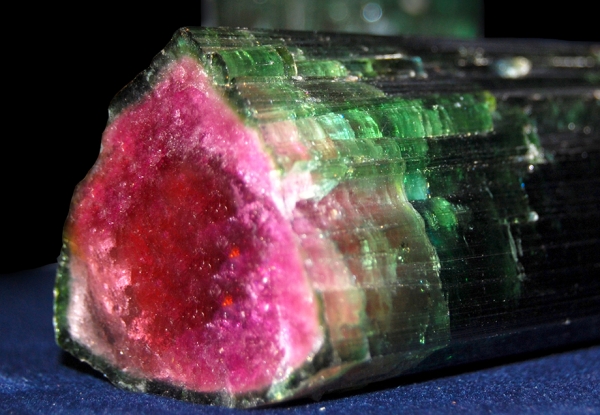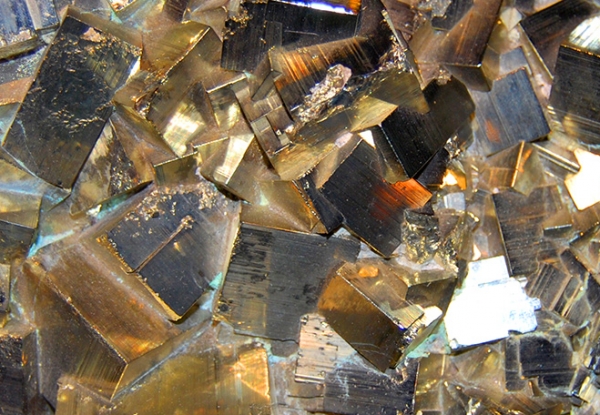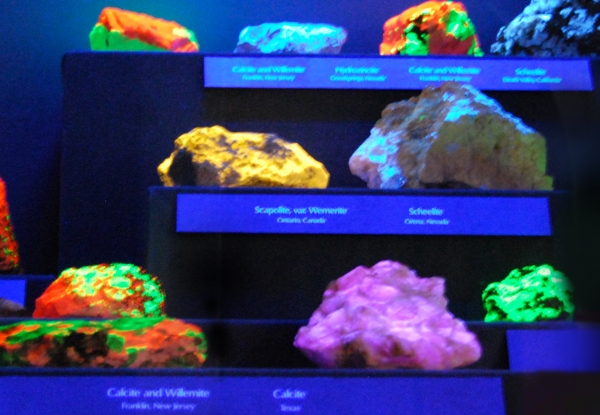Gem & Minerals
Note: The Gem and Minerals Hall will be closed for renovations until fall 2022.
The Gem and Minerals Hall – displays “Beauty from the Earth” showcasing specimens from the Museum’s collections. Enjoy the amazing natural beauty of touchable minerals, beautiful gems, vibrant fluorescent and phosphorescent specimens, and a “crystal mine” of riches.
Learn about the natural history, historical uses, and impacts of minerals and gems. Minerals are solid, inorganic, naturally-occurring chemical compounds. Of the thousands of minerals that exist, only about 20 groups are considered gemstones. A gem is a gemstone that has been cut and polished to enhance its beauty.
Featured in the exhibition and pictured at the right is a “watermelon-colored” tourmaline specimen. Tourmaline is among the most varicolored of all gemstones, occurring in virtually every color, with green and red being the best known. Tourmaline is actually not a single mineral species; it is a group of minerals, each of which share similar characteristics, but differ in chemical composition.
Touchable Mineral
Botryoidal Fluorite forms a unique grape like shape when many long, narrow crystals of a mineral grow radially from a common point.
Pyrite, or “fools gold,” is a common mineral naturally forms into cubic crystals.
Quartz crystal, the most common mineral in the Earth's crust. The exquisite crystal featured in this ongoing exhibition, donated by Bryant & Sons, Ltd. weighs 480 pounds.
Crystal Mine
The Crystal Mine also has more touchable minerals such as Smithsonite, Aquamarine and crystal geodes.
Flourescent and Phosphorescent Specimens
While visiting the Mineral and Gem Gallery, be sure to stop by the fluorescent and phosphorescent case and see how long and short wave ultraviolet light illuminates the specimens.


